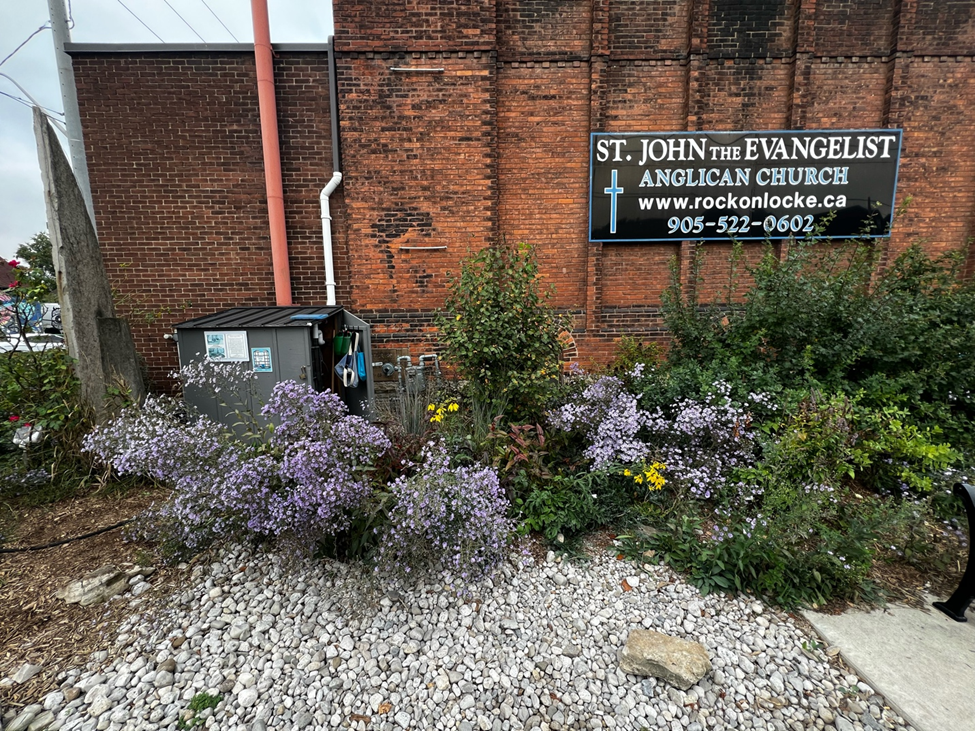2025 will be the third year since the St. John the Evangelist Stormwater Management Rain Garden was installed. This is a native pollinator rain garden that was installed with the support of Green Venture in the spring of 2025. Rainwater is diverted away from the roof of the church into a tank, where it is stored to supply water for the garden.
The past two years we have provided opportunities for children and adults to learn about the garden and some of its unique features. One area that continues to surprise people is winter sowing. Winter sowing of seeds sounds counterintuitive. Don’t we have to wait until the spring to plant our seeds?
Like much of the care of native gardens, the best results are achieved when we imitate nature and choose seeds that are already adapted to our climate—native seeds. The method below, written by Erinn Turnbull, is provided in detail so that you can try winter sowing for yourself.
How did the garden come about?
The Church had rainwater seeping through the building foundation into the basement. The solution was a stormwater management garden, installed with the support of Green Venture’s sustainable green infrastructure NATURhood program, their contractors, and an energetic team of volunteers from the church and community. The garden is planted with native and nativar species that benefit insects and our local wildlife. The garden is watered with rain captured from the roof, which is diverted into a large holding tank and is later pumped out to the garden via soaker hoses when needed. The garden is maintained by a volunteer team consisting of church and other community members – it is lower maintenance than a traditional garden of non-native plants. Enjoyed by the community for its beauty, it also educates about the benefits of native plants and the positive effects of biodiversity for our local wildlife.
Winter-sowing: starting new native plants for the garden
Winter-sowing is a low-maintenance and inexpensive method to start many types of seeds outdoors, in a protective manner to increase your success, while using the natural freeze/ thaw cycle of the seasons. It works especially well for most native plants as many need cold stratification to break seed dormancy for germination.
Seeds are sown into potting mix into ‘mini greenhouses’ that are made from recycled plastic bottles/containers and are placed outside in late fall to early winter. The seeds will sprout naturally just when the time is right and can be grown-on in the winter-sow containers until ready for transplanting or potting up. Once the weather is warm in spring, the winter sow containers should be ‘opened’ so your plants don’t overheat and be watered as required. Winter-sown plants are hardened-off naturally/automatically outdoors, they can go right from the winter-sow container into your garden.
Save seeds from the garden as the pods mature during the season. Swap and share seeds with other gardeners for winter sowing to economically increase your plant variety.
Tips:
Choose a clear container of any colour that is tall enough to provide 4-6 inches of potting mix and 4-6 inches of ‘greenhouse’ space above soil level—2L or 4L water bottles work well, as do clear clamshell type containers. Don’t forget to put drainage holes in the bottom of your container and to add a label for easy identification in the spring!
Norman Newbery of the Church of St. John the Evangelist, Hamilton, and Erinn Turnbull, Past President of the Kirkendall Garden Club share the coordination and care of the rain garden.


Starting Fresh: Spiritual Resolutions for a Faith-Filled 2026